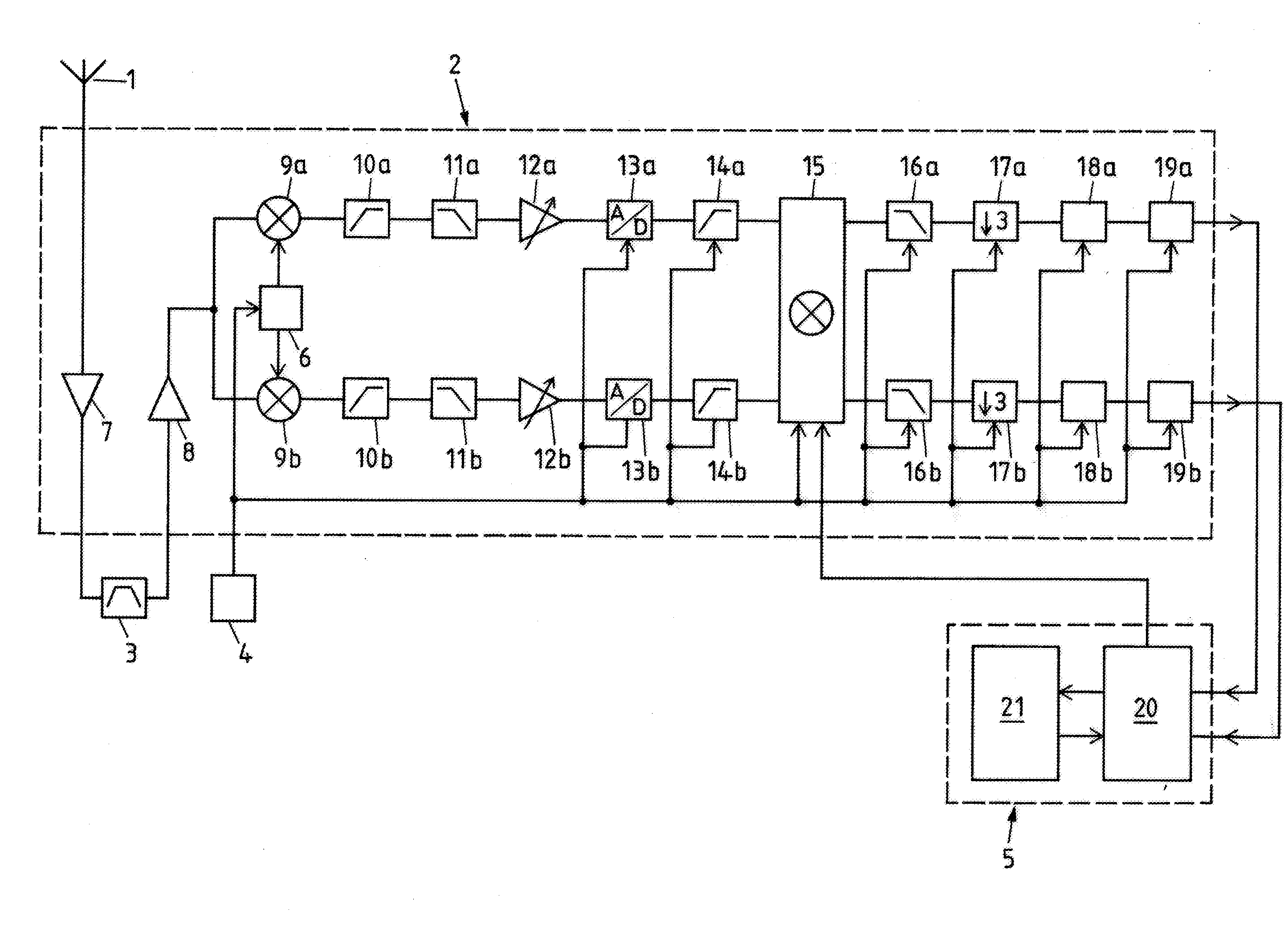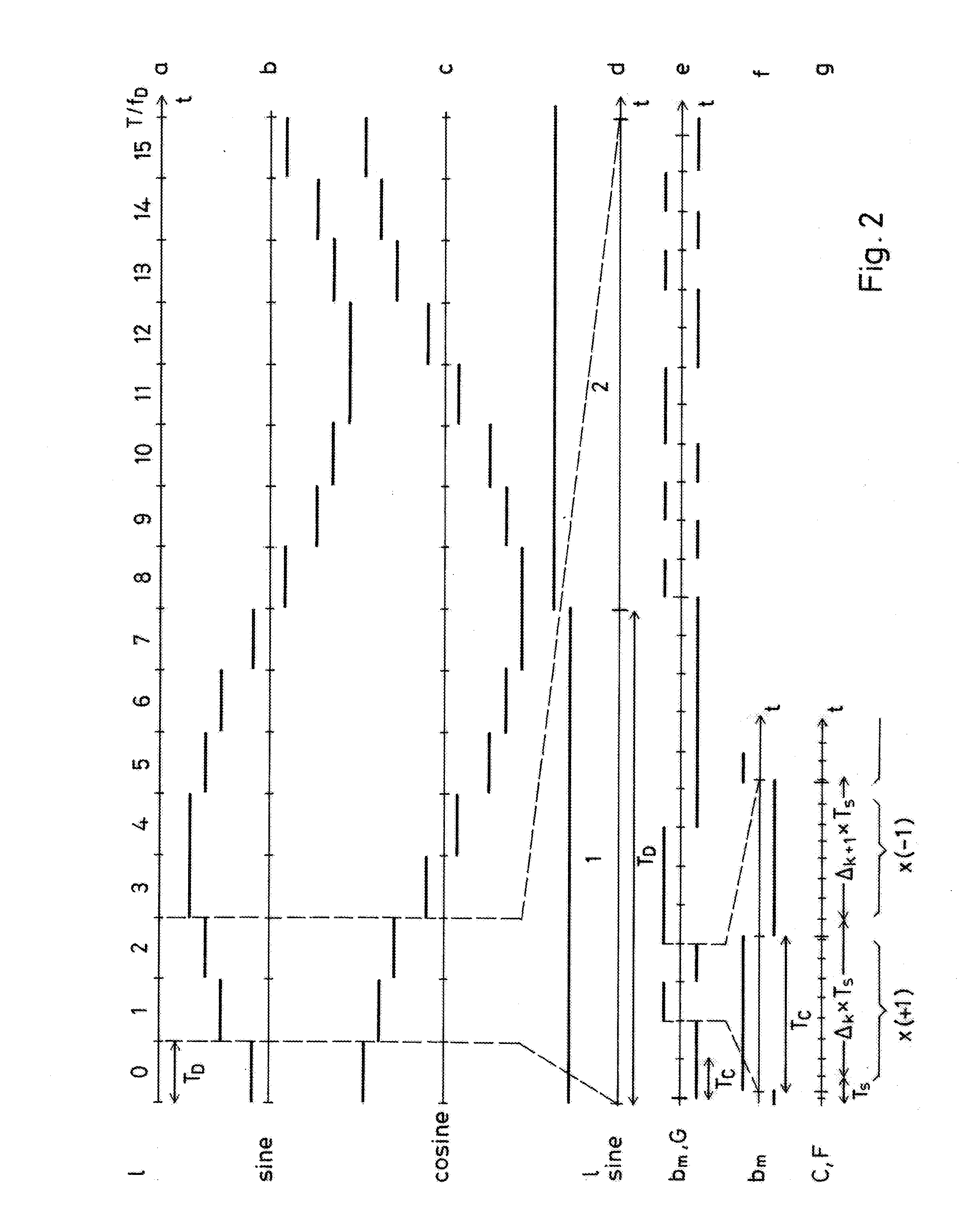Method of processing a digital signal derived from a direct-sequence spread spectrum signal and a receiver
a technology of spread spectrum and digital signal, applied in the field of processing a digital signal derived from a directsequence spread spectrum signal and a receiver, can solve the problems of uneconomical methods regarding processing power and memory requirements, and achieve the effects of simple and cheap production, simple and convenient production, and simple correlation process
- Summary
- Abstract
- Description
- Claims
- Application Information
AI Technical Summary
Benefits of technology
Problems solved by technology
Method used
Image
Examples
Embodiment Construction
[0014]The embodiment described in the following is a receiver suitable for GPS. The modifications which are necessary if other GNSS systems like GLONASS or GALILEO are to be used are in general straightforward. The receiver comprises (FIG. 1) an antenna 1 followed by a front-end circuit 2 with a radio frequency part and a base-band pre-processing part, preferably, but not necessarily, on a single chip, a bandpass filter 3, a TCXO (temperature compensated crystal oscillator) 4 and a base-band processor 5 which may be a general purpose computer, e.g., a portable computer like a PDA, to which digital data from the front-end circuit 2 can be transmitted via a suitable interface and which in turn controls components of the front-end circuit 2.
[0015]The bandpass filter 3, usually an SAW (surface acoustic wave) filter, is a component that may be external to the front-end circuit 2. The TCXO 4, also may be a separate component, provides a basic frequency of between 19 MHz and 40 MHz, e.g., ...
PUM
 Login to View More
Login to View More Abstract
Description
Claims
Application Information
 Login to View More
Login to View More - R&D
- Intellectual Property
- Life Sciences
- Materials
- Tech Scout
- Unparalleled Data Quality
- Higher Quality Content
- 60% Fewer Hallucinations
Browse by: Latest US Patents, China's latest patents, Technical Efficacy Thesaurus, Application Domain, Technology Topic, Popular Technical Reports.
© 2025 PatSnap. All rights reserved.Legal|Privacy policy|Modern Slavery Act Transparency Statement|Sitemap|About US| Contact US: help@patsnap.com



